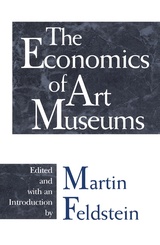
After a brief look at the development of a tradition in museum architecture, this study examines Kahn’s three art museums: the Yale University Art Gallery, the Kimbell Art Museum, and the Yale Center for British Art. It traces the development of each museum through museum through its various stages: the background of the institutions and the commissions, the programs for the buildings, their designs and evolutions, their constructions, and the evaluations of the completed buildings. Material on Kahn’s plans for a museum for the De Menil collection, begun shortly before his death, is also included.
Accompanying the text are illustrations of the buildings, including Kahn’s personal sketches, architectural plans and sections, and presentation perspective drawings. Photographs of the finished buildings present the transformed vision of the architect in tangible form, showing that the museums, while related, are individualized accomplishments. This is the first comprehensive study of Kahn’s museums.

This volume brings together nontechnical essays on these issues by economists associated with the NBER and personal statements by leaders of America's major national art museums and related foundations. It can be read not only by economists but also by museum officials and trustees. Museum directors generally come to their responsibilities with a background in art history and curatorial work but without experience in thinking about the management and public policy aspects of museum administration. Trustees who serve on museum boards generally have a background in business or law but have not previously tried to apply their experience to the unusual economic problems of museums. The background papers, the panelists' remarks, and the summary of the discussion will help them to approach their responsibilities with a better understanding of the problems and possibilities of the museum.

Attracting controversy as readily as they do crowds, art museums--the Grand Louvre project and the new Orsay in Paris, or the proposed Whitney and Guggenheim additions in New York, for example--occupy a curious but central position in world culture. Choosing the art museums of provincial France in the previous century as a paradigm, Daniel Sherman reaches toward an understanding of the museum's place in modern society by exploring its past. He uses an array of previously unstudied archival sources as evidence that the museum's emergence as an institution involved not only the intricacies of national policy but also the political dynamics and social fabric of the nineteenth-century city.
The author ascertains that while the French state played an important role in the creation of provincial museums during the Revolutionary era, for much of the next century it was content simply to send works of art to the provinces. When in the 1880s the new Republican regime began to devote more attention to the real purposes and functions of provincial museums, officials were surprised to learn that the initiative had already passed into the hands of local elites who had nurtured their own museums from their inception.
Sherman devotes particular attention to the museums of Bordeaux, Dijon, Marseilles, and Rouen. From their origins as repositories for objects confiscated during the Revolution, they began to attract the attention of local governments, which started to add objects purchased at regional art exhibitions. In the period 1860-1890, monumental buildings were constructed, and these museums became identified with the cities' bourgeois leaders. This central connection with local elites has continued to our own day, and leads into the author's stimulating reflections on the art museum's past, present, and future.
This original and highly readable account should attract those with an interest in cultural institutions and art history in general as well as those who study the history and sociology of modern France.
READERS
Browse our collection.
PUBLISHERS
See BiblioVault's publisher services.
STUDENT SERVICES
Files for college accessibility offices.
UChicago Accessibility Resources
home | accessibility | search | about | contact us
BiblioVault ® 2001 - 2024
The University of Chicago Press









